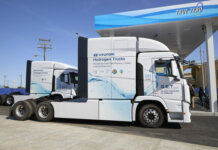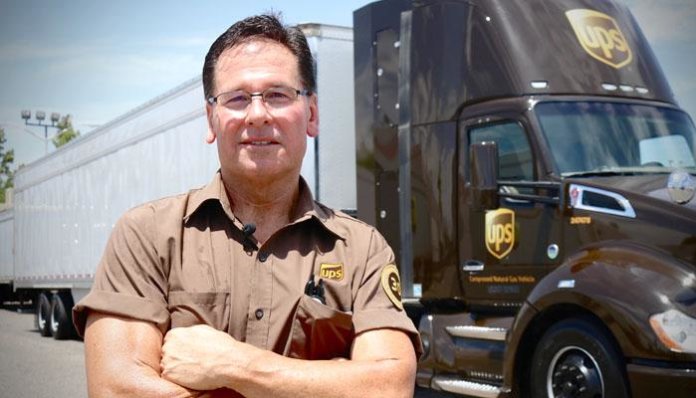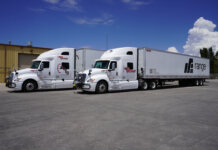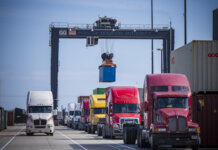The trucks and drivers in “Run on Less Regional,” a freight efficiency demonstration conducted by the North American Council for Freight Efficiency (NACFE), hit an average 8.3 miles per gallon for the recent three-week event, representing a significant improvement over the national average of 6.0 MPG.
Trucks from participating fleets – C&S Wholesale Grocers, Hirschbach, Hogan Transportation, J.B. Hunt, Meijer, PepsiCo, Ploger Transportation, Schneider, Southeastern Freight Lines and United Parcel Service (UPS) – saved 2,750 gallons of fuel, $8,249 and 27.9 tons of carbon dioxide for just these 10 trucks over the course of 18 days. If all regional carriers reached this benchmark MPG, annualized potential savings would be over $9 billion, says NACFE.
“Going into the run, we had no idea what to expect in terms of just how fuel efficient these fleets could be. The numbers these trucks and drivers put up demonstrate that it is possible to achieve high MPGs in regional operations,” says Mike Roeth, executive director of NACFE.
NACFE says it chose to focus this year’s event on regional haul operations to demonstrate that with the right investment in technology and with skilled drivers, it is possible to achieve MPGs far above those of the average fleet. Over the course of Run on Less, NACFE also made note that better efficiency requires a commitment from both fleet leadership and drivers, and that because of its return-to-base operation, regional haul is ideal for alternative fuel vehicles, especially battery electric trucks.
The 10 trucks operated within 300 miles of their home bases in hub and spoke, dedicated, and multi-stop routes. They faced a variety of challenges, including traffic congestion, construction, and operation in urban environments and secondary roads. Some of the trucks operated in two shifts per day, possibly in differing duty cycles, and there was one natural gas truck (driven by UPS), which has lower inherent efficiency. NACFE also learned that because of the diversity of duty cycles, the equipment has a very utilitarian design, which challenges optimization.
“With a growth in regional haul, it is important that the trucking industry focus on making this sector as efficient as possible,” notes David Hoover, director of outbound logistics at Meijer. “What we all learned here with respect to the various duty cycles and driver performance is crucial to designing tractors, trailers, routes, etc., to dramatically lower the carbon footprint of North American goods movement.”
Throughout the run, the three Freightliners, two Internationals, two Kenworths, one Peterbilt and two Volvos were monitored by devices installed by Geotab and by data loggers from the National Renewable Energy Laboratory, both event sponsors. Speed, load, elevation changes, number of stops and weather were monitored during the three weeks. Shell was title sponsor for the run, and a number of other companies were event sponsors and supporters.
NACFE will now begin to analyze all the data collected over the course of the event and will report its detailed findings in early 2020. More can be found here.








Spinning your wheels. Electric vehicles are just changing where the emissions are released. They run on fossil fuels Natural Gas, and Coal that generate the electricity, far away with huge line loss to get the power to the charging stations. Hydrogen doesn’t exist in nature. It must be produced by splitting water using more electricity energy than you have left in the hydrogen produced. We do not have storage for hydrogen that doesn’t have leakage. Hydrogen is the smallest atom and it slides through it’s containment vessels . It also implodes it doesn’t explode. In a closed state hydrogen burning… Read more »
It’s kind of a regional issue really… Electricity in the US is 27% coal, 35% NG (63-ish percent) and the rest nuclear or various renewables. That means that about 1/3 is NOT fossil fuels, and moving away from it yearly. It’s also important to note that regionally, your electricity may be almost totally renewable – hydro in the PNW for instance. Even TX is getting upwards of 15% from wind these days. IA is way higher in the 30’s… With localized pockets of high density PV on the grids, those can be augmenting things incrementally as fossil fuels (coal in… Read more »